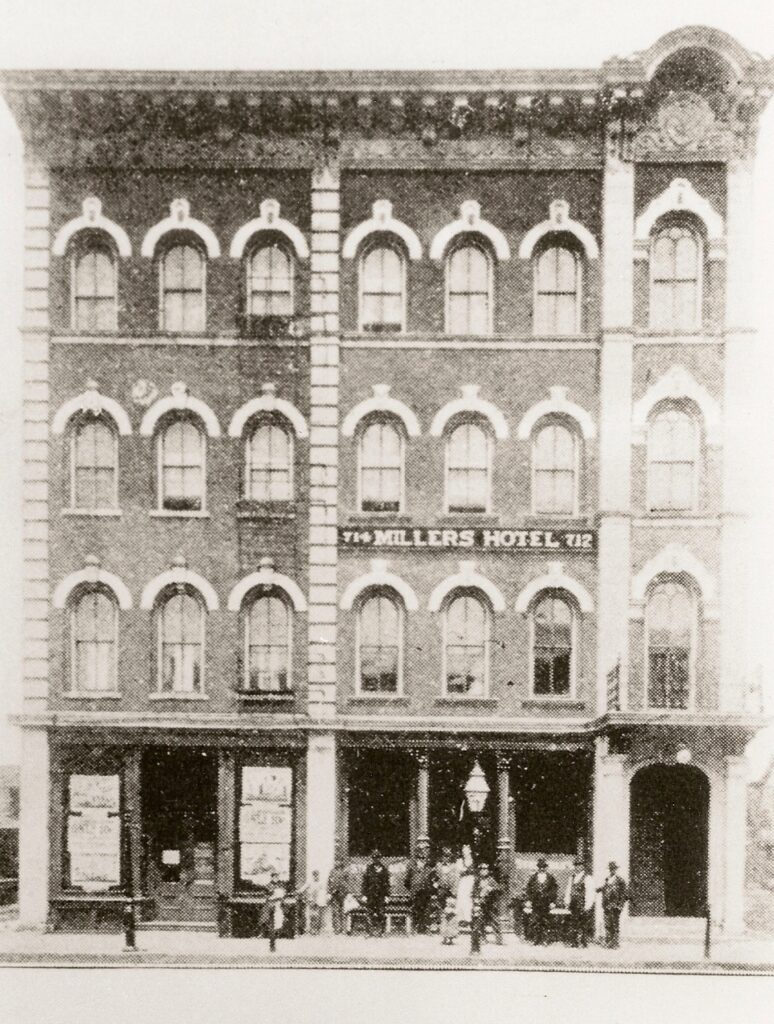Mission
The mission of the German American Heritage Center is to preserve and enrich for present and future generations knowledge of the German immigrant experience and its impact on American culture.
Vision
Our focus is cultural programs and immigrant contributions. We reach out to other cultural groups and demonstrate the contributions made by immigrants from many countries and from varied backgrounds to the ethnic palette which is the United States.

History
In the mid-to-late 1800s millions of German citizens left their homeland and settled as immigrants in the United States. The 1900 U.S. Census documented that over half the citizens in Iowa, Nebraska, Wisconsin, Minnesota, North Dakota and South Dakota were German immigrants or their descendants. Scott County, where the first passenger railroad crossed the Mississippi River, was the entry point for many immigrants to the upper Midwest region and points west. In 1900, Joseph Eiboeck, a veteran German newspaperman, described Davenport as, “the most German city, not only in the State, but in all the Middle West, the center of all German activities in the State.”
Founded on August 1, 1994 as a private, not-for-profit organization, the German American Heritage Center (GAHC) seeks to preserve the heritage of our German speaking ancestors for present and future generations and to enrich our knowledge of the German immigrant experience.
Today GAHC, a National Historic Site, has evolved a museum that includes a large permanent exhibit and two rotating special exhibits. Within the permanent exhibit, visitors enjoy an orientation theater, six education stations, and two restored hotel rooms. Visitors enjoy an interactive experience as you learn about immigrants’ journey by sea, train and foot, to their final destination at the German American Heritage Center building, which was originally a very busy hotel for thousands of immigrants in the 1860s. One of the highlights in the exhibit is called “Step into my Shoes.” Visitors will find footprints of a child, woman, and man at this section. They can step on any set of the footprints, which then triggers the corresponding character to appear before them on a screen and talk about their personal experience as an immigrant. Throughout this exhibition and the two rotating temporary exhibitions, visitors enjoy exploring many artifacts on display. The museum also provides educational programs, workshops, and classes relating to the German American experience and culture; assists in the coordination of festivals to foster an understanding of German American heritage; provides for cultural exchange through genealogy workshops and production of cultural presentations to the public; and partners with other heritage groups on programs, exhibits, and events.
The GAHC building was built in the 1860s, and was originally the Standard Hotel where thousands of German immigrants stayed in the 1800s when they arrived in the area. The building was purchased in 1995, partially restored in 1999, and reopened to the public in May, 2000. In October 2009, GAHC debuted a newly expanded space including a new large interactive permanent exhibit called the “German Immigrant Experience,” two traveling exhibit spaces, and large program facilities. GAHC offers several new programs based on the new permanent exhibit and two new temporary exhibit spaces.
The German immigrant experience is an integral part of the history and fabric of life in Iowa, in the region and in the nation. The German American Heritage Center (GAHC) was formed in 1994 to document and celebrate this heritage.
The Germania House was among the earliest of many “Gast Haus” buildings in the area. This structure is the last remaining immigrant hotel of that period in the region and is on the National Register of Historic Places. The GAHC saved the building from deterioration and potential demolition by raising $1.3 million to restore the exterior of the building and to restore the first and second floors of the four story building for use as a historical center. That work to save this historic treasure and to utilize it as the German American Heritage Center was completed in 2004.
For its collection, the German American Heritage Center and Museum considers gifts of objects and archives materials related to German and German-American culture or history, including:
- Objects brought by German immigrants, preferably before 1920.
- Objects made or used by German immigrants in the United States.
- Other objects made or used in the United States which represent the German-American experience.
- Photographs related to German-American history and experience.
- Archival material related directly to the history and operation of German American Heritage Center and Museum.
Unfortunately due to limited space capacity we are very selective when accepting donations. We are unable to accept any books or bibles at this time.
